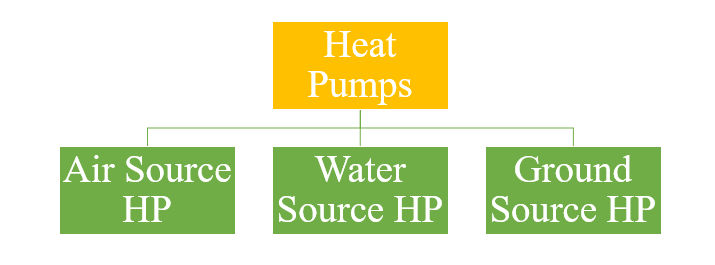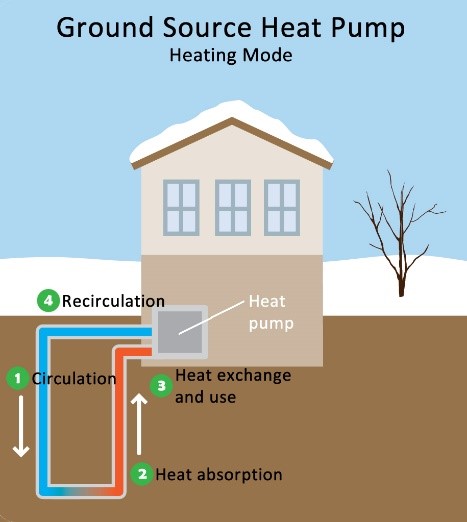Heat Pumps: Basics of Energy efficient solutions for heating needs!
With the world enduring the effects of Environmental pollutions, many eco-friendly and sustainable ideas have surfaced to tackle these issues. Ban on single use plastics, Electric vehicles, power generation using renewable sources are some of those. One of the such is the Heat Pump.
Heat Pumps are devices which transfer heat from a low temperature source (space or media from which the heat is extracted) to high temperature sink (space or media to which the heat is rejected) using very little mechanical work.
Heat pumps operate on Vapour Compression cycle as its working principle. It consists of 4 major components: Evaporator, Compressor, Condenser and an expansion device along with a working fluid/refrigerant moving through the system in a closed loop.
Vapour Compression Cycle:
Picking up the heat (thermal energy) from the source & reducing its temperature (cooling effect), the liquid refrigerant evaporates in the evaporator. This vapourised gas is compressed in the compressor raising its pressure using electricity. This high-pressure gas is condensed in the condenser giving out the heat to the sink increasing its temperature (heating effect). The expansion device placed in between the condenser & the evaporator, allows the high-pressure liquid to come to the evaporator pressure (which is less than the condenser pressure) without changing from liquid to gas. This process repeats again and again to achieve the desired temperature either on the cooling side or/and the heating side.
This article focuses on the heating effect of the vapour compression cycle applied as in a heat pump whose desired effect is heating. Heat pumps can be used to heat water as well as for space heating application in HVAC systems.

Figure 1 Vapour Compression Cycle
Based on the type of source, it is classified as follows:
1. Air Source Heat Pumps: These are the most common heat pumps with the source as ambient air. The heat is absorbed from the ambient air & is pumped to the required heating application. They are suitable for moderate climates where the temperature doesn’t drop below freezing point for too long.
These heat pumps when used for space heating are termed as air-to-air heat pumps & when used for water heating applications are termed as air-to-water heat pumps.

Figure 2 Types of Heat Pumps
2. Water Source Heat Pumps: The source in these heat pumps is water (water at ambient temperature or process water). Similar to air source heat pumps, based on applications, they can be either water-to-air or water-to-water heat pumps.
These are the most efficient Heat pumps owing to high heat capacity of water.
3. Ground Source Heat Pumps: These heat pumps use ground (earth) as source. The average temperature of the ground is constant throughout the year making it a constant source of thermal energy. A loop of water recirculation is buried to absorb heat from the ground as illustrated in fig. 3. They require large space for installation.
Benefits of Heat pumps:
- 1. Energy Efficient: Heat Pumps are more efficient than traditional heating systems because they don't generate heat, but rather transfer it around with the help of very little energy input making them cost effective as well.
- 2. Cost savings: Heat pumps can save money on energy bills by reducing heating costs.
- 3. Precise Control: Heat pumps can provide consistent temperature based on the requirement
- 4. Environmentally friendly: Heat pumps do not have any direct emissions, making them more environmentally friendly.
Limitations of Heat Pumps:
- 1. Cost: Heat pumps may have a higher upfront cost than traditional heating systems, although they can save money in the long run.
- 2. Climate: Heat pumps are most effective in moderate climates where the temperature does not drop below freezing for long periods especially for the air source heat pumps..
- 3. Supplementary heating: Heat pumps may require supplementary heating when used in extreme cold weather, which can increase energy costs.
To summarise, Heat pumps are an efficient, environmentally friendly, and versatile solution for heating applications. While they may have a higher upfront cost than traditional systems, the long-term energy savings and environmental benefits make them a smart investment.

Figure 3 Ground Source heat pump